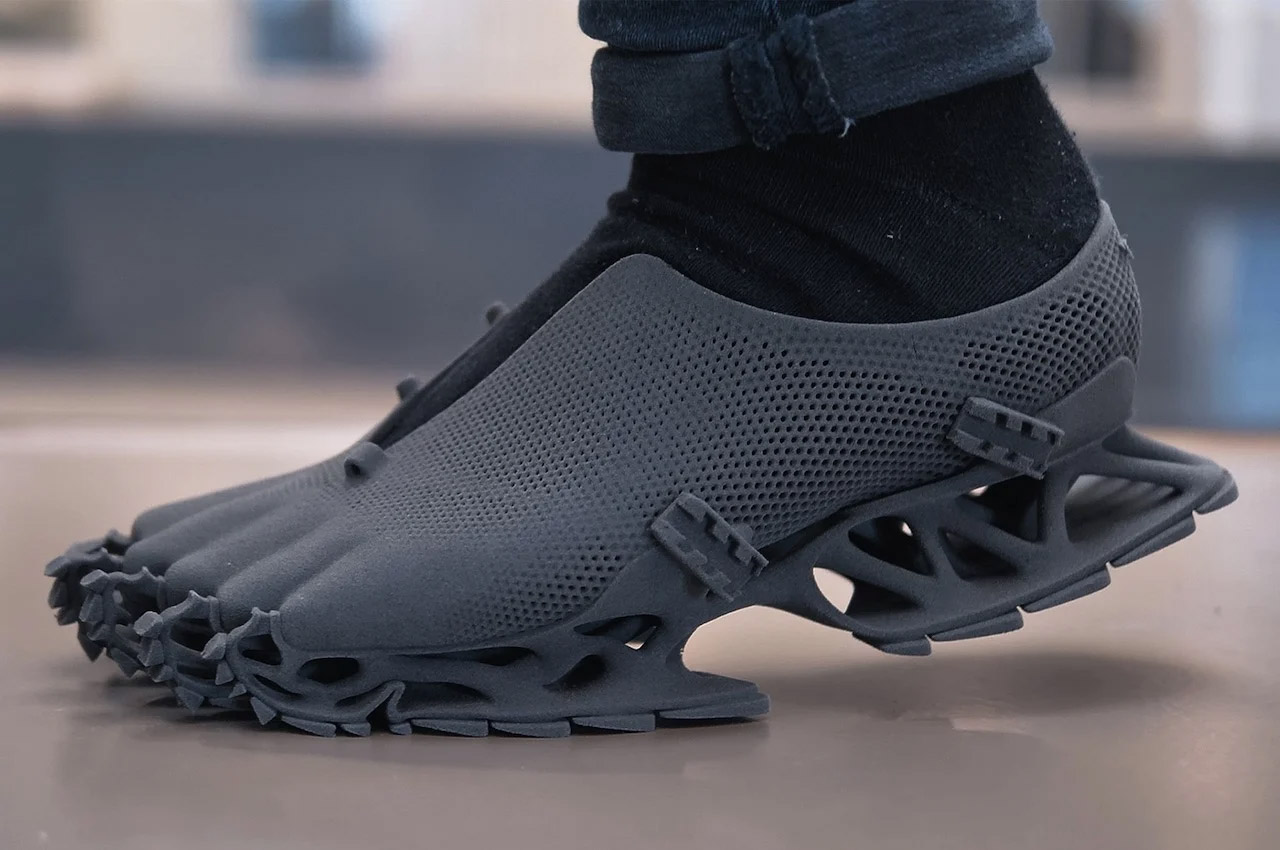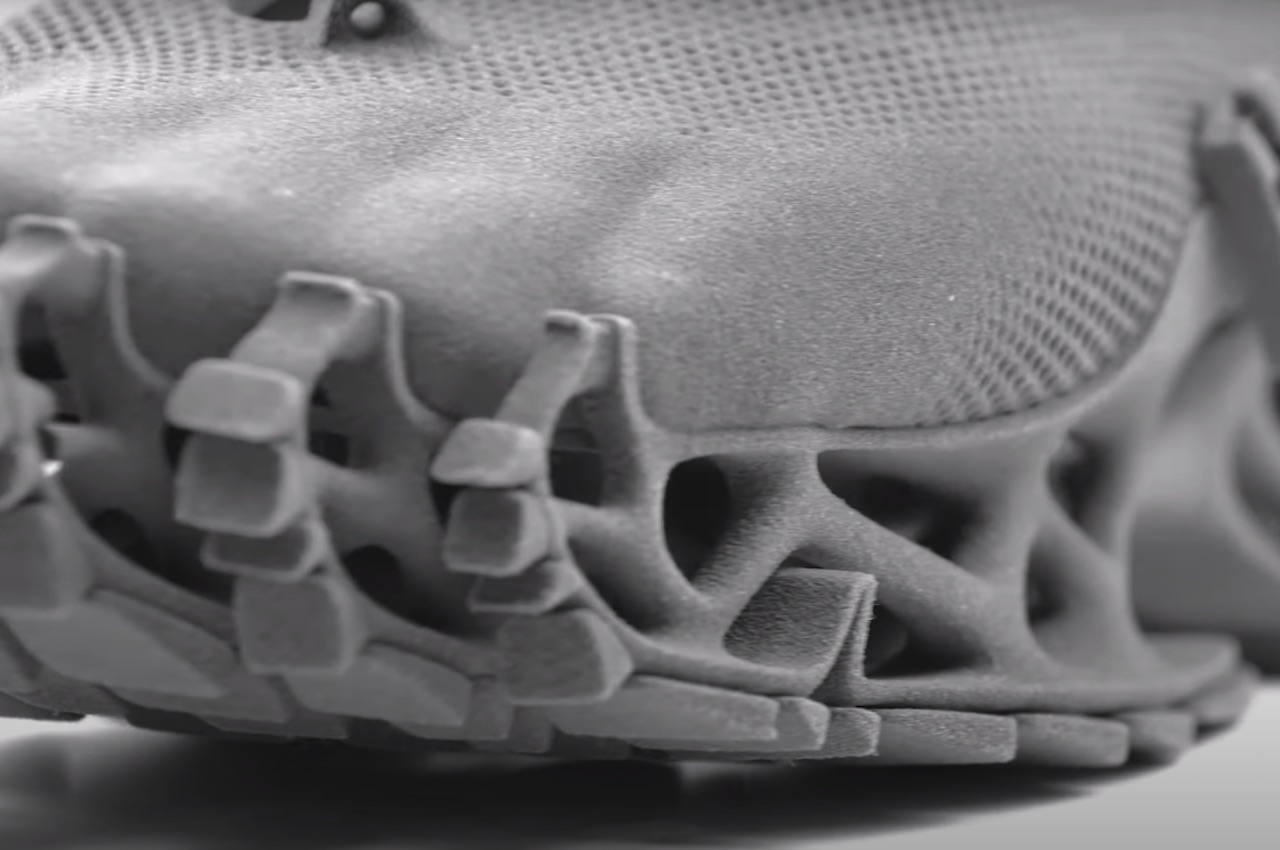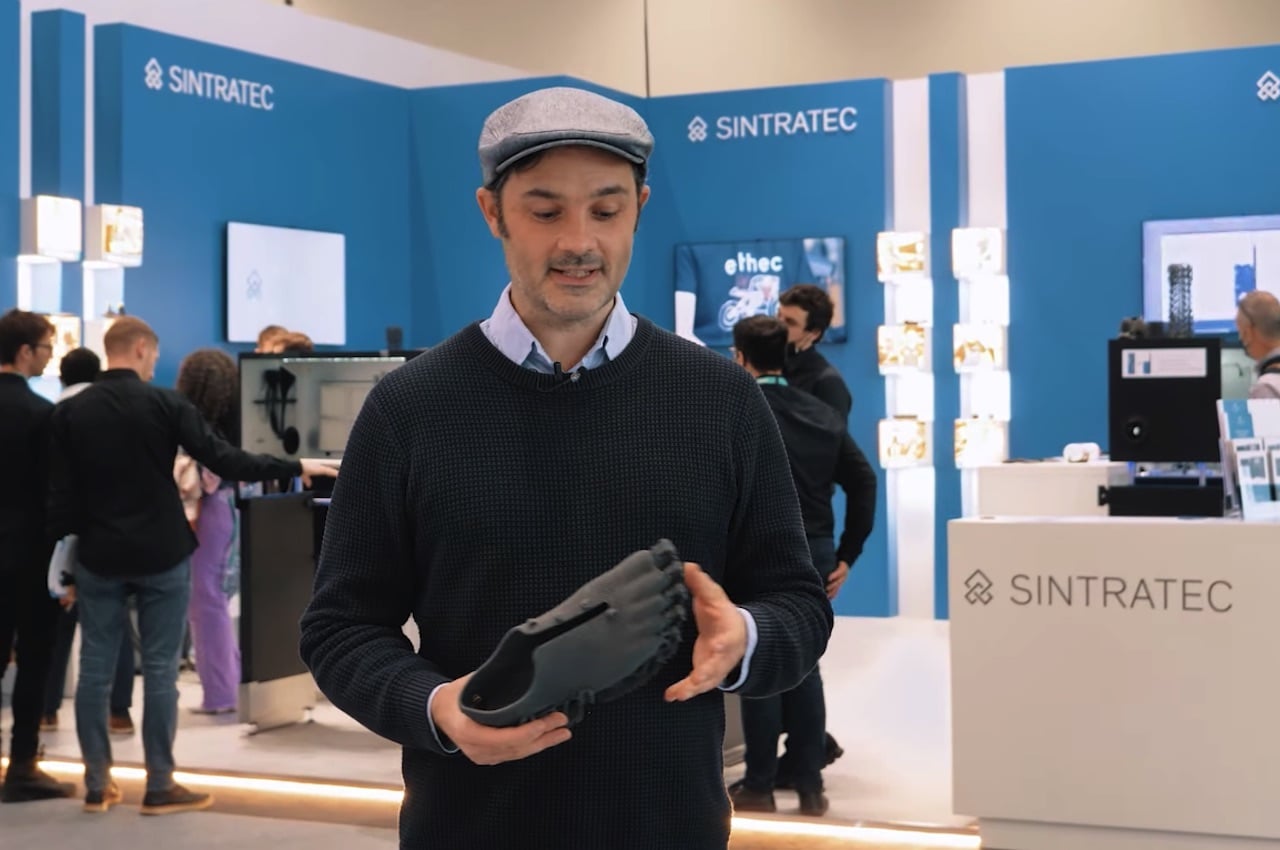
3D Printing is gaining more momentum and popularity than ever! Designers and architects all over the world are now adopting 3D Printing for the creation of almost all types of products and structures. It’s a technique that is being widely utilized in product design, owing to its simple and innovative nature. But designers aren’t employing 3D printing only to create basic models, they’re utilizing this technique in mind-blowing ways as well! From a 3D printed backpack constructed from recyclable materials to a pair of 3D printed shoes that’ll make you feel like Bigfoot – the scope of this dependable technique is unlimited! Dive into this collection of humble yet groundbreaking 3D printed designs
1. The Cryptide Sneaker


The Cryptide Sneaker was designed by Stephan Henrich for Sintratec. The German architect and designer came up with a pair of full 3D shoes meant to be laser sintered with a flexible TPE material. Using a Sintratec S2 System 3D printer, the shoes were formed and printed.
Why is it noteworthy?
The Cryptide features a sole with an open design. The designer said it was made possible by SLS production (Selective Laser Sintering) and a material called Sintratec TPE elastomer. Simply put, SLS is an additive manufacturing that takes advantage of a laser to sinter particles into a more solid 3D structure. Henrich and Sintratec worked together to bring the sneaker design into reality.
What we like
- The size and shape can adapt to the foot of the wearer
- They remind us of the Adidas Futurecraft 4D!
What we dislike
- They don’t rate high on aesthetics + style
- The shoes will leave freaky footprints
2. Otrivin Air Lab’s 3D printed products
Mother Nature already has its own tiny air purifiers, and not only can we use them to clean the air, but we can also even harvest them to create products that won’t harm the planet in turn. That’s the proposition that the Otrivin Air Lab interactive exhibit in Londo is trying to present, and it’s roping in visitors not only to observe the process but to actively take part in it. The space is enclosed in a lightweight and reversible timber structure, and one of the walls holds twelve “photobioreactors.” These are tall glass vessels filled with ten liters of living photosynthetic microalgae that absorb CO2 and release oxygen while also producing biomass in the process. Each day, that wall can take in 240g of CO2 and spit out 180g of oxygen as well as 84g of biomass.
Why is it noteworthy?
Visitors to the lab can take part in the daily harvesting of that biomass product that is then turned into bioplastics, bio-rubbers, and 3D printing filaments. These raw materials can then be used to create biodegradable and sustainable products, like vases and even stools. Some might find it a bit unsettling, but the fact that you are sitting on what is practically CO2 and air pollution should feel empowering. We might not be able to completely eradicate unclean air, but we can at least turn them into something harmless and useful.
What we like
- The lab is intended to showcase the viability and sustainability of a circular economy
- Nasal healthcare company Otrivin, who collaborated on this exhibit, will be using this process to create its Fibonacci NetiPot nasal sprays
What we dislike
- No complaints!
3. The Polyformer
The Polyformer looks interesting from the get-go, and its name sounds like something taken out of fictional literature. Its translucent white appearance is thanks to the fact that it is made from recycled plastic PET bottles, giving it an appearance that also speaks to its purpose.
Why is it noteworthy?
In a nutshell, the machine slices up PET bottles and melts them to turn them into filaments only 1.75 mm in diameter. These recycled plastic threads can then be used in normal 3D printers to create more things, probably with the same distinctive translucent appearance as the Polyformer.
What we like
- Offers an alternative to the traditional way PET bottles are recycled
- The designer has made available all the information needed to recreate it yourself
What we dislike
- No complaints!
4. Angled Stands
Designed to easily become the centerpiece of any geek’s table, these stands are 3D-printed pretty much to scale, and are designed to easily fit most standard headphones (and even VR headsets!)
Why is it noteworthy?
Although each headphone stand is 3D printed (and you can even see the lines on some of them), it also has a stunning amount of detail. Take for instance the Chewbacca headphone stand right below. This is because Angled partners with designers and artists to release new variants and models online. Artists create detailed models that get approved by Angled’s team based on sizing, proportions, and its ability to be printed without any flaws/errors. Once a design gets approved by the Angled team, it makes its way to their store and for every sale, the artist gets a commission.
What we like
- They can be customized and painted to make them all the more realistic
- Has stands that hold your Xbox or PS controllers
What we dislike
- No complaints!
5. Wabo
Wabo is a collection of hand boards that are created from plastic waste produced from 3D-printed prototyping. Eight million pieces of plastic make their way into the ocean on a daily basis. That’s a lot of plastic. While some brands commit themselves to gimmicky sustainable practices that have more to do with marketing than carbon-neutral manufacturing, other brands learn how to make something out of the plastic waste they produce.
Why is it noteworthy?
The multidisciplinary design studio Uido Design is a studio known for its catalog of 3D printable product designs and its team is doing something about the waste they produce during the design process. Shredding the plastic waste produced from 3D printing into bits and pieces, Uido Design uses the waste to create hand boards for users to ride the ocean waves.
What we like
- The hand boards are handcrafted
What we dislike
- Not a necessary product, but still fun!
6. Resting Reefs
Resting Reefs is a system of artificial reefs that are 3D-printed from the cremated ashes of passed-over loved ones.
Why is it noteworthy?
Spreading the ashes of relatives who’ve passed over across the ocean is a beautiful way to memorialize loved ones. While the symbolism behind it is the point of tossing your loved ones’ ashes into the wind, Royal College of Art graduates Louise Lenborg Skajem and Aura Elena Murillo Pérez developed a means to still memorialize our passed-over loved ones while regenerating endangered ecosystems in the process. Resting Reef, a line of artificial reefs made from cremated ashes using 3D technologies, marks the culmination of Lenborg Skajem’s and Murillo Pérez’s studies at RCA.
What we like
- Allows surviving family members to visit their loved ones’ eternal resting places
- The 3D-printed mounds offer ideal growing conditions for oysters
What we dislike
- No complaints!
7. The Throne
This sustainable toilet is designed to compost solid waste while also tackling the sanitation crisis – using design and technology to do good sh*t! It is a solution that eradicates plastic waste and turns it into a construction material that reduces the load on landfills.
Why is it noteworthy?
Created by Spanish design studio Nagami and To: it has been dubbed The Throne and it comprises three parts – a teardrop-shaped body, a dramatic, double-curved sliding door, and a bucket for solid waste. All the parts were printed within three days, including the base and some smaller accessories that were either injection-molded or ordered. It also includes an off-the-shelf separation toilet seat to separate urine from solids for composting.
What we like
- Sustainable design that combats the sanitation crises
- The teams used discarded plastic medical equipment from European hospitals for the prototype
What we dislike
- No complaints!
8. Cullan’s 3D-printed shoes
Designed in the metaverse by Cullan Kerner, the shoes embody an aesthetic that’s best described as ‘oddly refreshing’ and the reason is because it doesn’t stick to the constraints of regular shoe design intended for mass production. The process with shoe design is standardized to a great degree – you’ve got pre-set sizes, materials that are readily available, dies for cutting/molding these materials, and processes like stitching or gluing that bring them together
Why is it noteworthy?
Cullan’s design process, however, is completely different. For starters, the shoes were made entirely in Gravity Sketch, a free VR software that allows you to design directly in a 3D space. Cullan designed the shoes almost like a sculptor makes an art piece, creating in 3D space. The shoes are made for 3D printing – a process that still hasn’t been mass-accepted by the shoe industry. The idea is simple – Cullan’s model gets imported into a 3D printing software, and the printer meticulously builds the design layer by layer using a single flexible elastomeric material.
What we like
- Each shoe can be designed to fit you perfectly, and they’re all made to order
- Available as NFTs
What we dislike
- They’re not in production!
9. Vaude
Vaude is an outdoor mountain sports brand that develops sustainable outdoor gear because they want younger generations to be able to enjoy the outdoors in the same ways we’ve enjoyed it. Supplying the clothing, accessories, and equipment necessary to take on your next hike, camping trip, or forest bath, Vaude is committed to a responsible and sustainable design process from start to finish and back again. Using innovative 3D printed back pads, Vaude’s latest product is a fully recyclable backpack made from mono-materials.
Why is it noteworthy?
Dubbed Novum 3D, Vaude’s outdoor backpack features a honeycomb construction that ensures maximum stability while keeping the materials needed for production to a minimum. Each component of the backpack, from the straps to the packsack and even the honeycomb back pads is 3D printed from 100% thermoplastic material (TPU). Each component of the Novum 3D is also fully removable and recyclable, taking a big step towards a circular economy.
What we like
- Sustainability remains at the forefront of Vaude’s design principles
- This type of construction offers us the highest stability with the least amount of material
What we dislike
- No complaints!
10. Alive
Alive is a customizable, 3D-printed wheelchair for dogs suffering from joint-related body ailments. As our dogs grow older, age-related body issues, such as arthritis, hip dysplasia, and paralysis make it difficult to enjoy life. When even moving feels hard, aging dogs are less likely to spend time with family members and take care of bodily needs, leading to psychological stress.
Why is it noteworthy?
While technical accessories and equipment do exist to offer some relief, antiquated building methods make it hard for dogs to adapt to wheelchairs and other assistive appliances. Revolutionizing the canine assistive appliance game, industrial designer Martin Tsai conceptualized a wheelchair for dogs called Alive that can be 3D printed to fit your dog’s body data and needs.
What we like
- It’s a one of a kind design that provides aid to dogs suffering from joint-related body ailments
- Uses 3D scans of the dog’s body data to generate an optimized wheelchair for each dog
What we dislike
- No complaints!